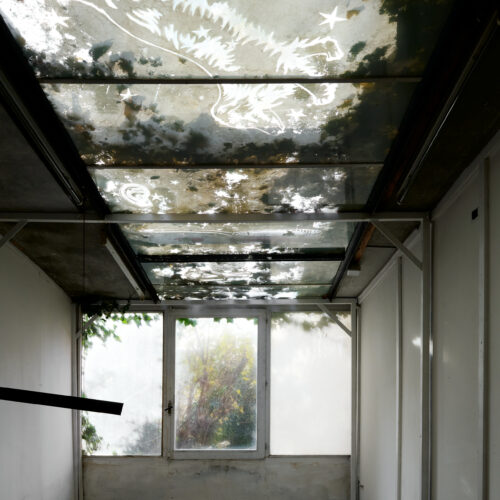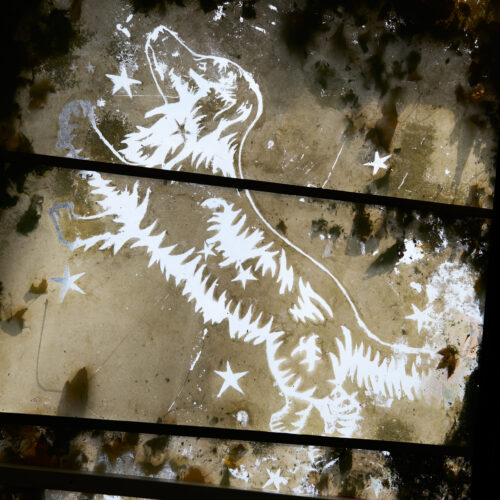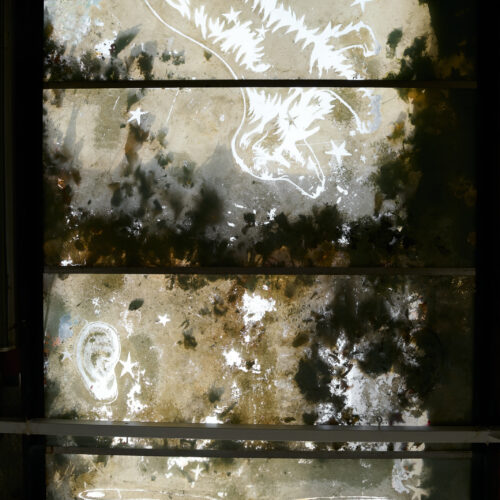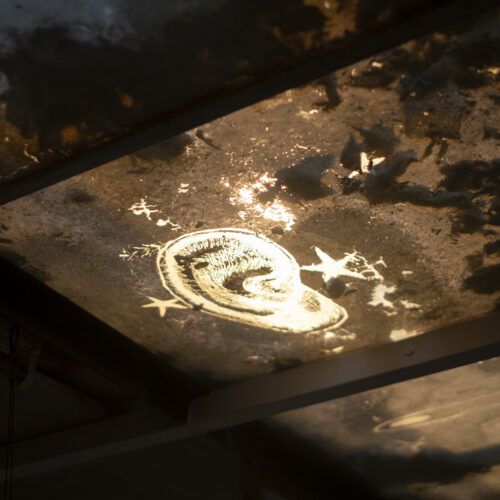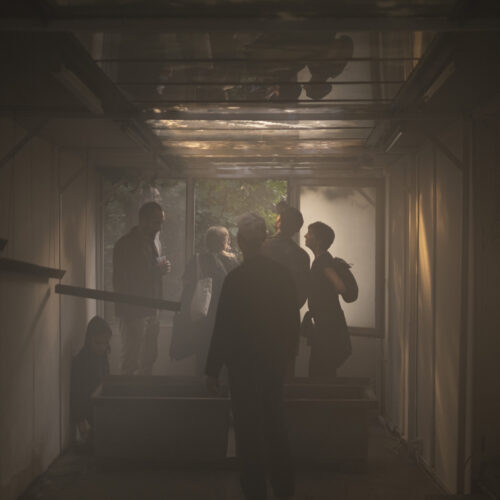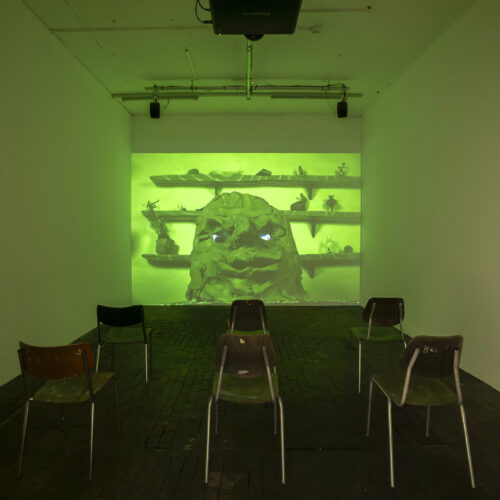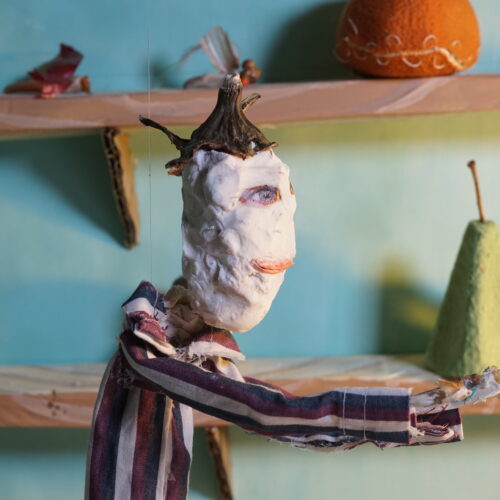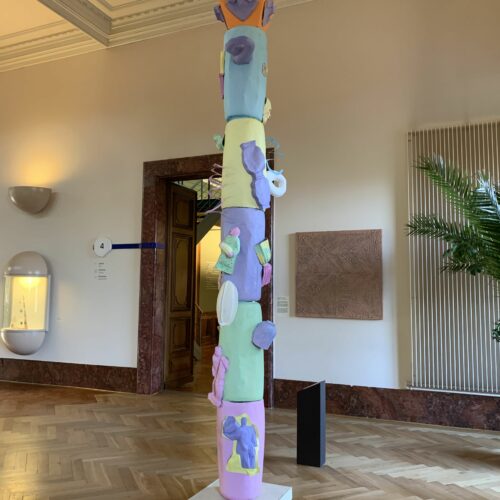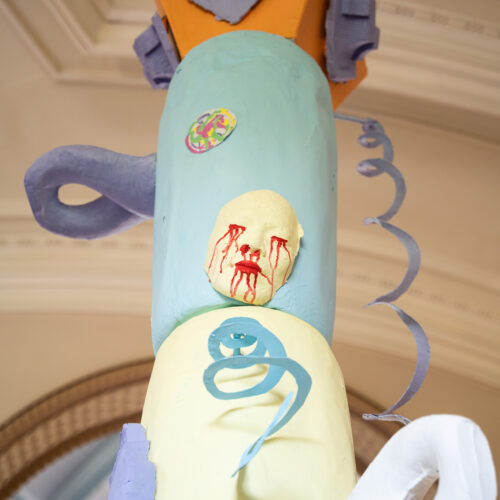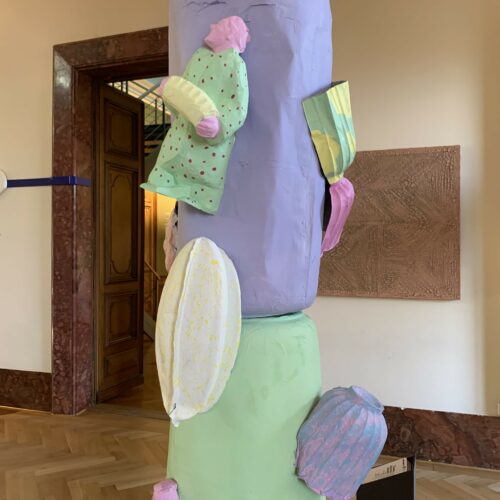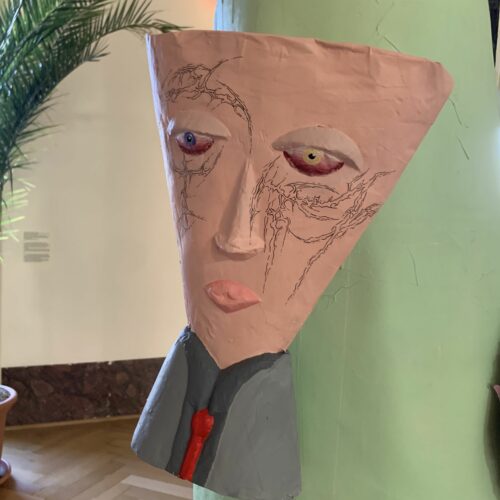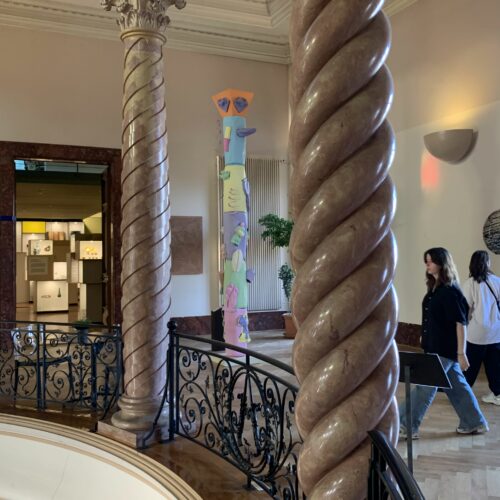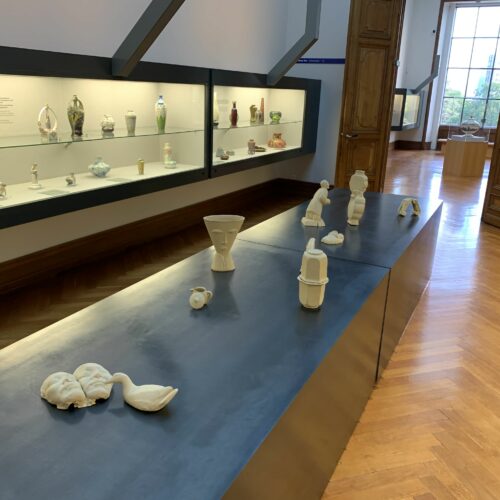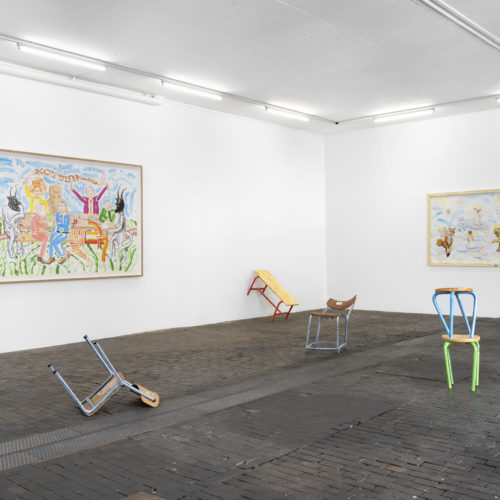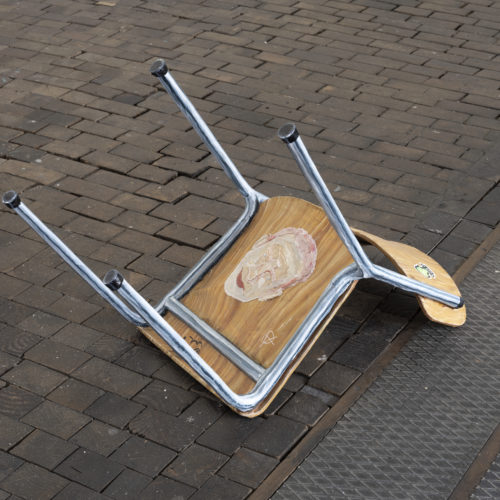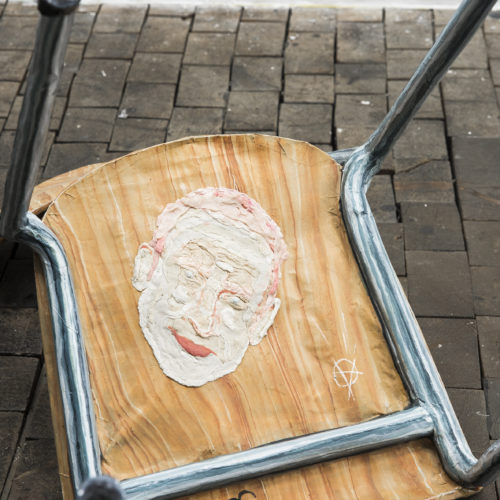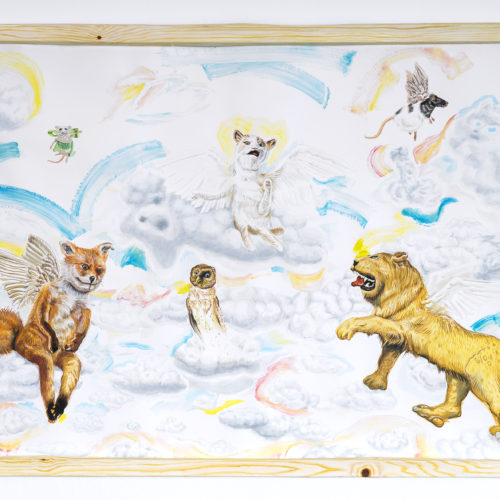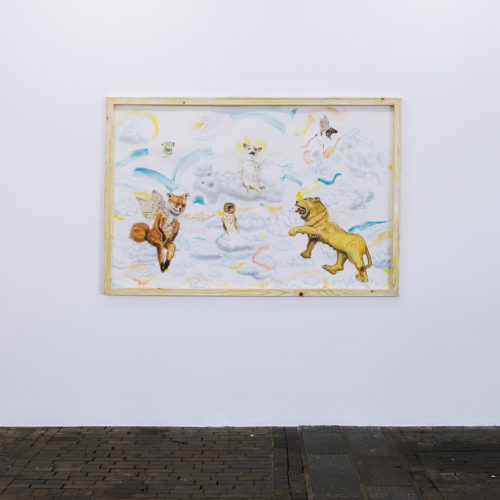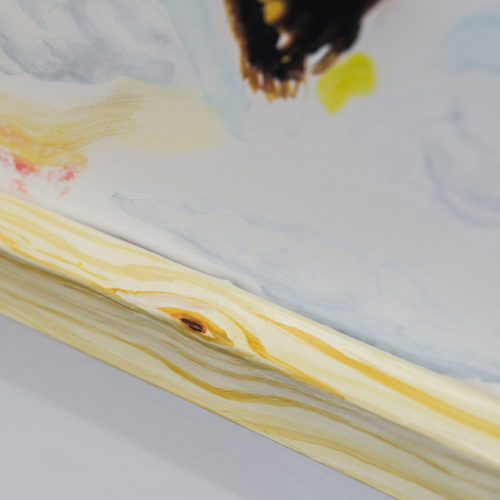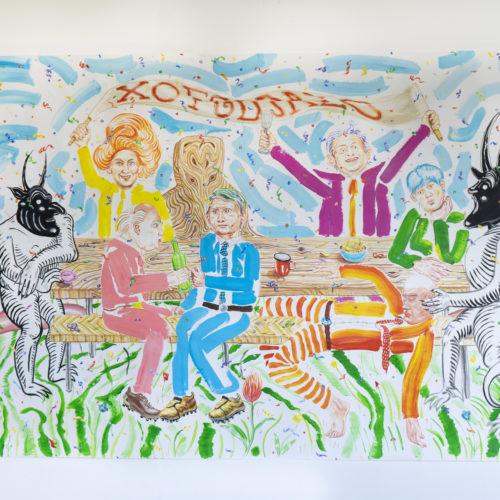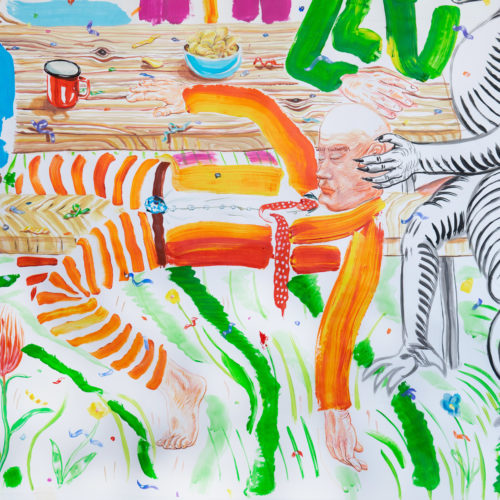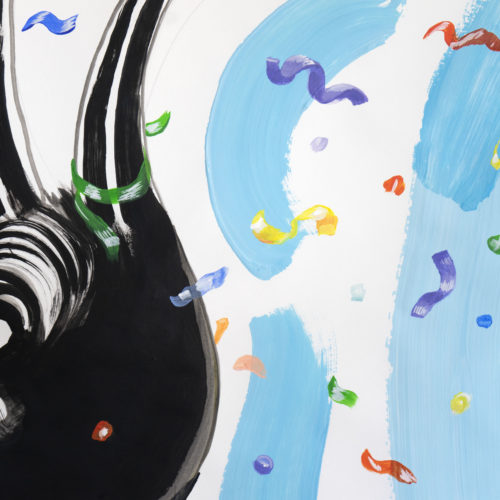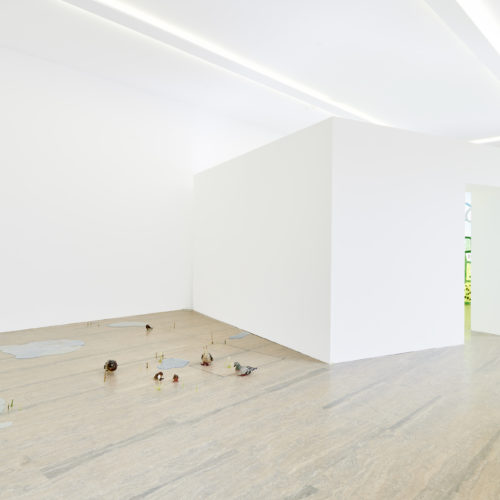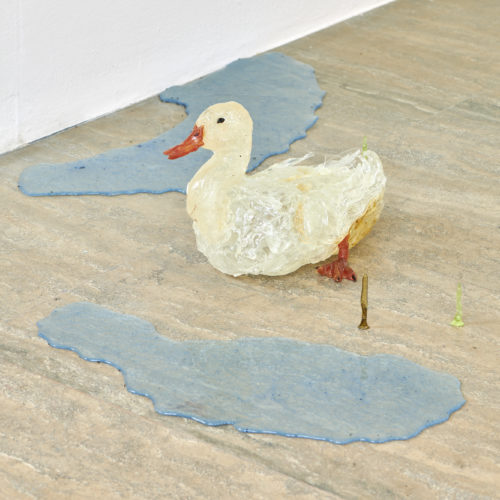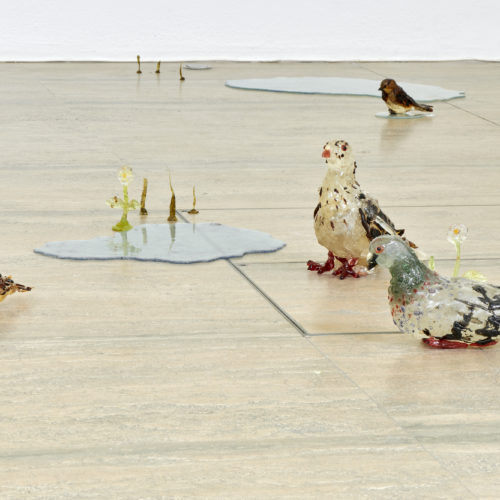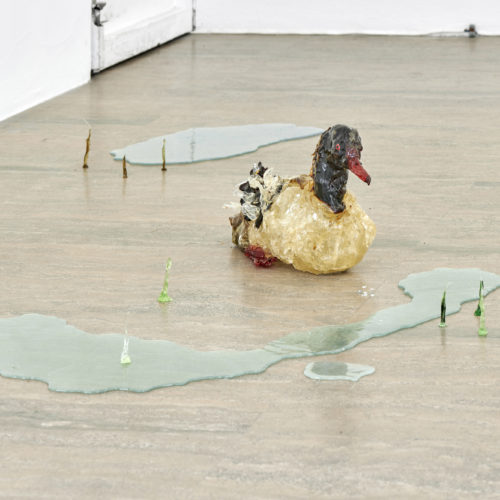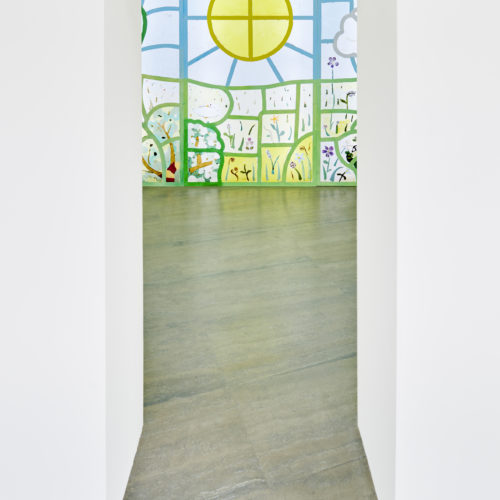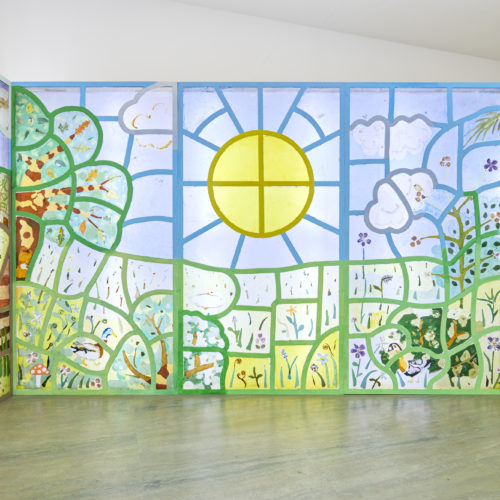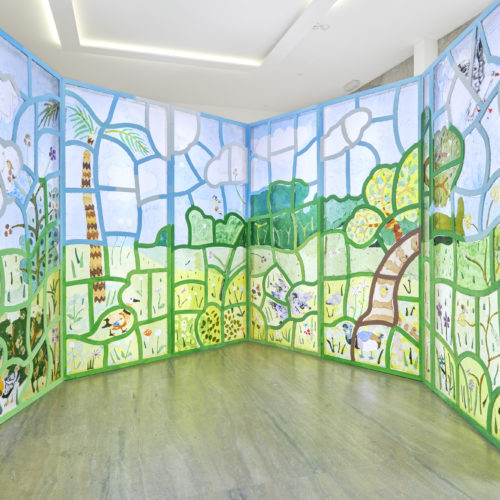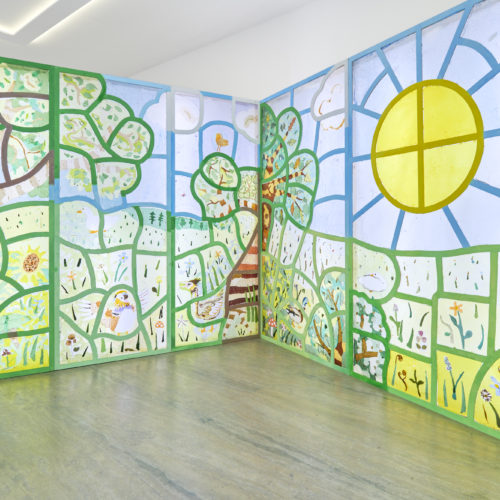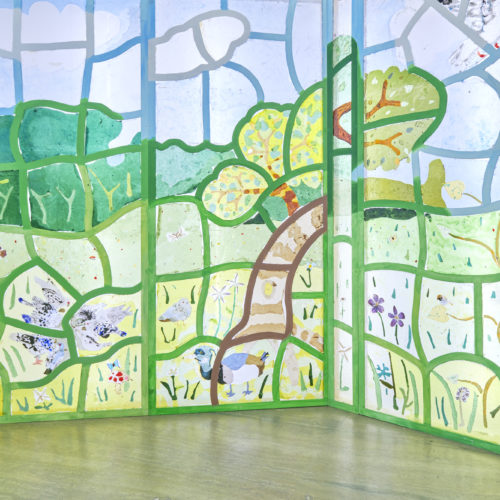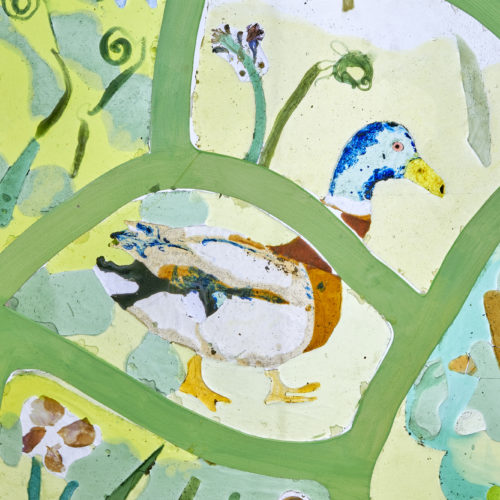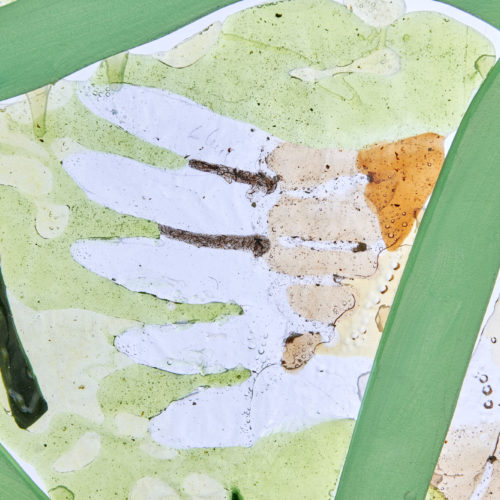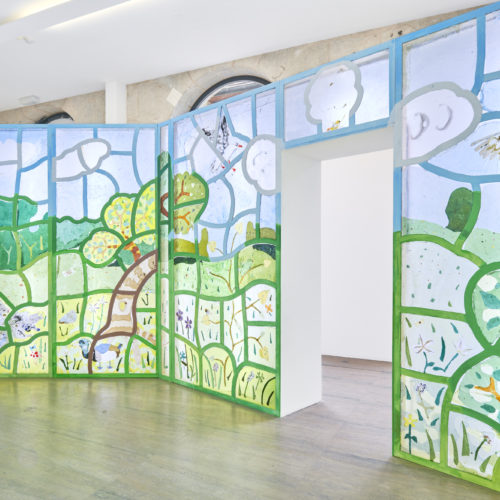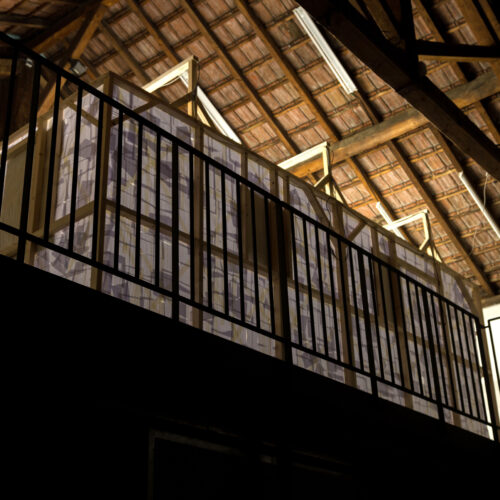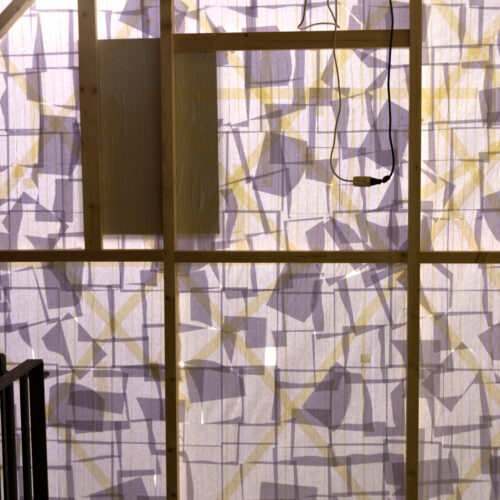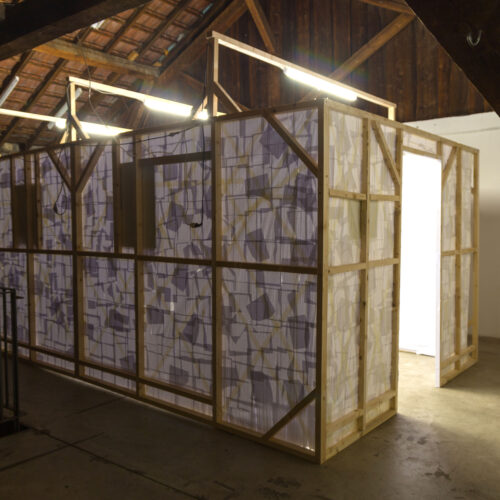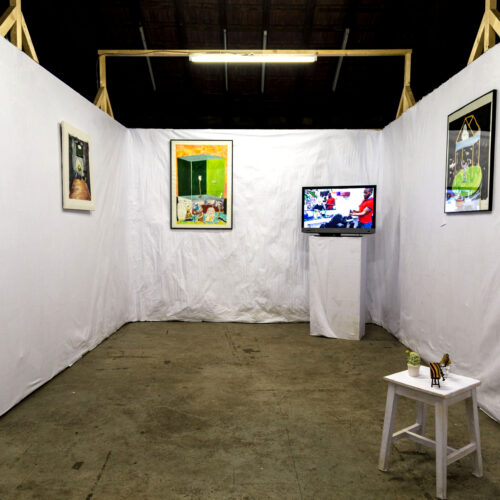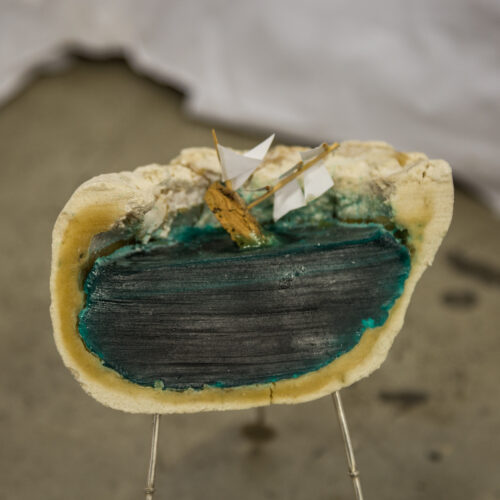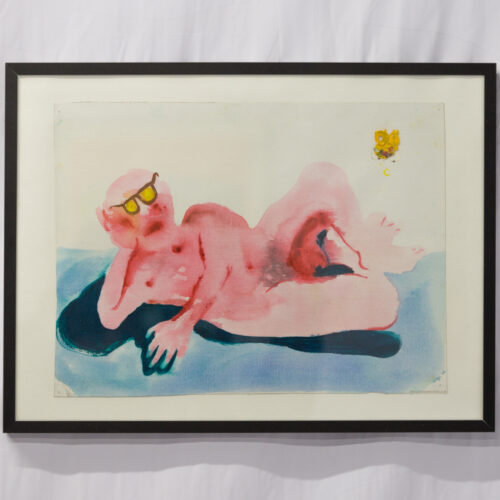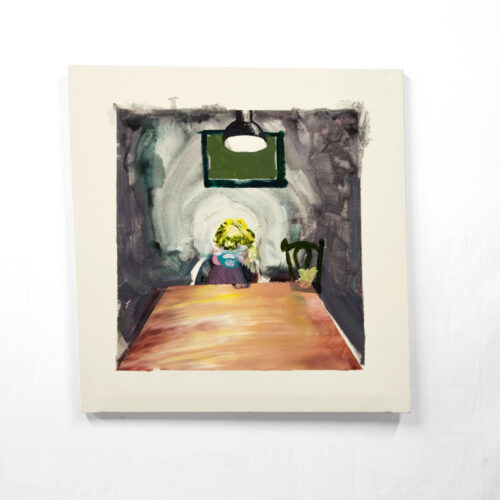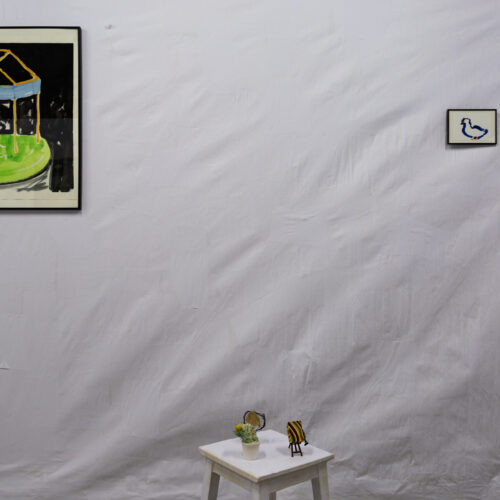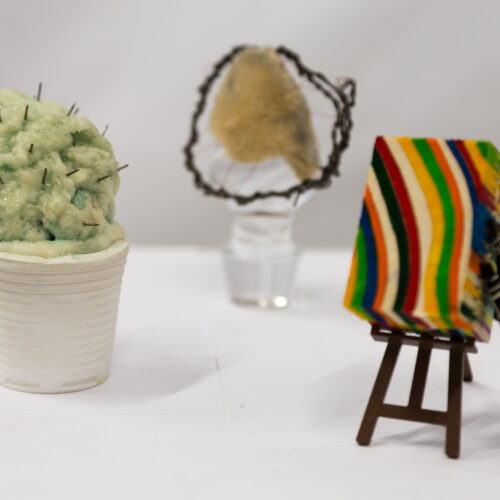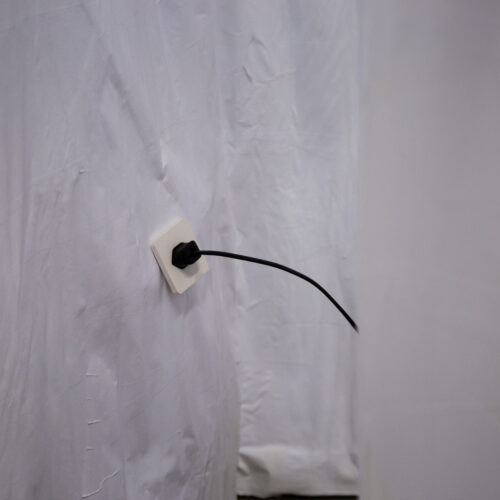Rohrschachsterne
Intervention in the Clochetons building on an invitation of Wunderkammer collective
21.09.24-15.12.24
For this exhibition, I worked on the building’s zenithal glass roof. It’s a space separating the outside from the inside, which allows us to contemplate the sky from the ground. Initially covered with a thick layer of dust and paint, the light did not come in easely, which weakened its function. But at the same time, this layer of grime evoked the building’s past, and I found various objects, such as a dog toy, belonging to the former inhabitants, when I was working on the roof. In order to connect the past to the present, as well as the earth to the sky, I decided to engrave elements in this layer, and to leave the rest intact.
The engraved motifs are linked to a childhood experience: I used to go to a pediatrician who had me do a sort of Rohrschach, where I had to imagine constellations at random from star charts. I decided to do the same thing using a map of the Lausanne sky on the day of the equinox, and to imagine constellations that I then engraved in the glass roof, respecting its proportions as much as possible. So this piece speaks of the passage of time, as well as the cycles of the seasons and the sun: it will change with the year, the weather and the seasons.
Flunked
Animation video at “Bourses de la ville” at center for contemporary art of Geneva
06.09.23-08.10.23
Flunked is an animated film using various stop-motion techniques, alternating scenes with puppets, people in costumes and painted animations. Formally, it is linked to my sculpture and painting practice, mixing materials such as papier-mâché, isomalt sugar, clay and found objects. These mediums allow me to compose the film like a painting, but in space and movement.
The film tells the story of a sorcerer’s apprentice’s rite of passage in a magical factory that produces clay humans for work. He takes the test to become a confirmed sorcerer, but fails spectacularly. Failing to meet his master’s standards, the latter considers him a failure and expels him from the factory. Based on my experience as a teacher, the story explores the subjects of norms and power relationships in educational settings.
Link: https://youtu.be/JC4xllXxP3M
Transformations
Exhibition at the Ariana museum in collaboration with Association PACO
01.06.23 – 13.08.23
For the call for projects organized by PACO, an association that works with teenagers who need an alternative to school, I made a proposal to create a collective in-situ sculpture using plaster moulds from the museum’s collection.
We freely revisited stamping molds from the swiss ceramist Paul Bonifas (1893-1967), isolating and combining them to transform the formal molds into a into a unique and hybrid piece. The result was a papier-mâché column, that could be viewed as a metaphor for the idea of support, resonating with those in the museum, which are emblematic elements of its architecture.
Bourses BLCG 2021
Exhibition at the center for contemporary art of Geneva
08.09.21-10.10.21
It is a series of papier-mâché casts of school furniture, repainted in trompe-l’œil style. I chose these objects because I mostly encountered them in places that had the fonction of educating me : School, university, military service… And I found them again when I started teaching visual arts in middle schools in Geneva. It made me realise that school furniture is a disciplinary tool, because it regulates the relationship between body and space. In the classroom, the way chairs and tables are arranged says a lot about power structures: if they’re arranged in rows and separated from each other, it’s harder for students to talk, whereas if they’re arranged in a circle, they encourage communication.
I felt that a tension was present in the classroom as well as in the institutional setting in general, and the furniture bore its traces: the students reappropriated it, engraving it, drawing on it or putting stickers on it. Thus, the use of the casting technique refers to the way institutions try to mold us into what they want, but the way they are painted evoques the resistance individuals put up. In order to reflect on my own relationship with authority and the teacher role I had to assume, I took up these elements in a personal way, creating, for example, a chewing-gum portrait of Emmanuel Macron under one of the chairs.
Candy Island
Solo show at Halle Nord, Geneva
16.04.21 — 15.05.21
«Candy Island» is an installation I made for Halle Nord, an art center in Geneva. It offered an immersive experience to the public by letting it discover its colored interior of stained glass windows made out of
sugar, backlit by neon lights in the manner of a light box. The shape of the construction and the landscape represented by the stained glass windows were inspired by the Rousseau Island, located near the Mont-Blanc bridge in Geneva. This island is an in-between space : a haven of peace with its trees and birds, but disturbed by the large luminous signs, stores and cars which circulate incessantly on the Mont-Blanc bridge. It is also an emblematic place in Geneva, which owes its existence to the fortification of the city’s lake entrance five centuries ago.
These elements were expressed through isomalt sugar, which resembles glass, and neon lights which imitate daylight (in the manner of shopping malls, they give the impression of natural light, whereas the space is a large luminous box). Together with the stained-glass windows depicting a preserved «nature» populated by birds, they created an atmosphere full of illusions, reminiscent of folk tales such as Hänsel and Gretel.
Interview with Radiovostok
Article by Irène Languin in the tribune de Genève
White Lite
Solo show at Aduplex
On an invitation by Rémi Dufay
08.02.18 – 02.03.18
This project emerged of the desire to create an installation in which to show my work. Inspired by the carnival in basel, I built a white cube made out of papier-mâché in the exhibition space. It was a rectangular space (height: 2 meter 20, width: 3 meter, length: 5 meter 30) maintained by a wooden sctructure which bore the white papier-mâché walls. Just like a theater set, the structure and the back
of the walls were visible on the outside. I paid attention to details, like the electrical outlet.
Since this space had its own lighting, I shut off that of the building. On the inside of the papier-mâché-space, the walls were white and opa que, while they revealed transparencies similar to the lanterns of the
carnival in Basel on the outside. The contrast between the inside and the outside created an immersive experience, which is one of the key caracteristics of the traditional white cube. The spectator was invited to see my artworks inside of the installation.
